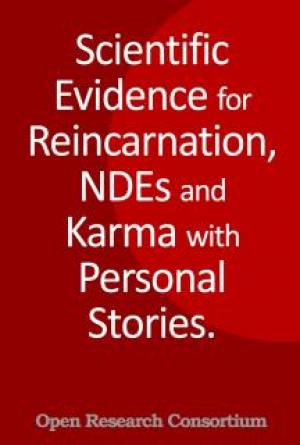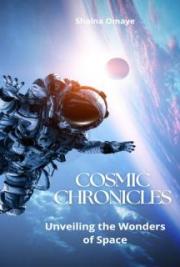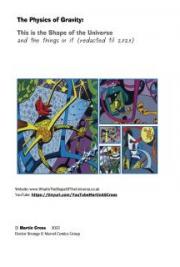
55
Published by Richard J. Wilson 2010
Copyright © by author with all rights reserved
ISBN 145281791
Contact author at: theether@cox.net
Table of Contents
Introduction: The Dispute 6
Parties to Dispute 7
Dispute Led To Progress 9
Dispute Victim of Cold War 11
Grounds for Indictment 13
We are playing with Fire 16
Purpose of this work 17
Part I: Catalogue of Physical Behaviors of Space 19
Behaves Like a Physical Atmosphere 20
A Physical Light Barrier 22
Physically Distorts 23
Physically Vibrates 25
Produces Physical Energy 26
Physical Interconnection 27
Interchangeable With Matter 27
Produces Physical Sensations 28
A Physical Trampoline 29
Has Physical Typography 30
Tides and Currents 31
Winds 31
Waves 32
Whirlpools 32
Noise 33
Helter-Skelter Appearance 37
Author’s Note 34
Einstein Would Be Appalled 34
Part II: Medieval Reason Forums Closed 36
Astrophysicist Hoyle Treated Like Galileo 40
The Sad Silence of Astrophysicists 42
Part III: The Baconian Solution 44
British Adopt Bacon’s Dual Solution 47
Americans Adopt Bacon’s Dual Solution 50
Part IV: Three Steps to Reopen Forums 53
1. Separate Cosmology and Astrophysics 53
2. Restore Tacit Agreement 54
3. Target Movers and Shakers 55
Bibliography 56
“By far the greatest hindrance and aberration of the human understanding proceeds from the dullness, incompetency, and deceptions of the senses; in that things which strike the sense outweigh things which do not immediately strike it, though they are more important. Hence it is that speculation commonly ceases where sight ceases; insomuch that of things invisible there is little or no observation.”
Francis Bacon: Novum Organum 1620
Introduction

Einstein
“We may say that according to the general theory of relativity space is endowed with physical qualities; in this sense, therefore, there exists ether . . . space without ether is unthinkable; for in such empty space there would be no propagation of light . . .”
Einstein: Leyden Address 1920
The Dispute
There is a serious dispute by very intelligent people over the physical nature of space. The dispute arises because of what Francis Bacon calls in his Novum Organum the “dullness, incompetence, and deceptions of our human senses.” When we observe outer space, our human senses lead us to two different conclusions:
On the one hand, if we judge by appearance, space appears and feels to us like an empty void, leading some to conclude the earth and heavenly bodies are spinning in an empty vacuum. On the other hand, if we judge by behavior, space exhibits physical behaviors – for example, it carries light and heat from the sun and stars – leading some to conclude space is some sort of invisible substance called “the ether.”
Parties to the Dispute: Cosmology champions the conclusion that space is an empty vacuum. Although often confused with astrophysics, cosmology is not a modern science like astrophysics. It is a scholastic philosophy that uses Aristotle’s ancient method of inquiry, and seeks the goal described in his ancient Greek Organum.
Following this ancient method, cosmologists divide the universe into categories according to appearance to arrive at the conclusion that it is composed of three base elements of space, energy, and matter, and it then applies human logic to speculate upon where the universe came from, where it will end up, and how many universes exist.
Early biblical cosmologists used this ancient method to develop the theory that in the beginning there was only God and totally empty space. Lonely God then created the heavenly bodies to float in the void, and created man to populate the earth and keep him company. They also speculated there are two other invisible universes called Heaven and Hell where man goes after life in this universe, and predicted, if man doesn’t mend his ways, God will destroy our universe in a fiery apocalypse.
Modern cosmologists generally agree with the biblical cosmologists. Using the same method of inquiry, they theorize our universe began as an empty vacuum; and that there was a mysterious “big bang” that created the earth and heavenly bodies that are now speeding from the point of explosion out into space. They also speculate there are probably many alternative universes, and that ours may someday collapse upon itself in a fiery apocalypse.
Modern cosmologists argue this “big bang” theory is the result of advances in modern science that just happens to agree with Genesis, but Francis Bacon observed in his Novum Organum that they were already promoting such a theory based on Genesis in 1620:
“Some moderns have with extreme levity indulged so far as to attempt to found a system of natural philosophy based on the first chapter of Genesis . . . and bring them into the view of the world so fashioned and masked, as if they were complete in all parts and finished.”
On the other hand, astrophysics champions the conclusion that space is some sort of invisible physical substance. Using the modern scientific method suggested in Francis Bacon’s Novum Organum, astrophysicists divide the universe into parts according to their observed behavior, and seek to determine what the universe is made of, how it produces its behaviors, and the laws that nature uses to govern the behavior.
Using this different method and seeking this different goal, astrophysicists theorize that, since space, energy, and matter all exhibit physical behaviors, they must all be physical substance forming a part of a unified field of interrelated and interchangeable substance. Einstein managed to discover the formula for converting matter into energy, and was actively contemplating the possibility that space could be converted into energy and matter.









